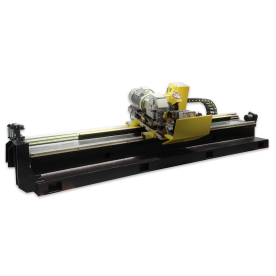[Stainless Steel Pipe making machine]Stainless Steel Pipe Making Machine: A Comprehensive Guide to Production Processes
News 2025-4-8

Stainless Steel Pipe Making Machine: A Comprehensive Guide to Production Processes
1. Raw Material Preparation: The initial stage of stainless steel pipe production involves the selection of high-quality raw materials. These materials are then processed through melting and casting operations to form the basic ingots or billets. These billets are further prepared for the pipe-making process by cutting them into desired lengths and shapes.

Stainless Steel Pipe Making Machine: A Comprehensive Guide to Production Processes

Stainless Steel Pipe Making Machine: A Comprehensive Guide to Production Processes
4. Quality Inspection: Quality control is a crucial aspect of stainless steel pipe production. After each stage of production, the pipes undergoes rigorous quality inspections to ensure that it meets specified standards and requirements. This includes checking for defects, impurities, and other factors that could affect the performance of the pipe.
5. Finishing and Packaging: Once the pipe has passed all quality inspections, it is then ready for finishing and packaging. This involves polishing, cutting, and other finishing operations to ensure that the pipe is smooth and aesthetically pleasing. The finished pipes is then packaged for transportation and storage, ready for use in various applications.
In conclusion, stainless steel pipe making machines are complex and sophisticated pieces of equipment that require a highly skilled workforce to operate effectively. The production process involves multiple stages, from raw material preparation to finishing and packaging, ensuring that each stage is carried out with precision and accuracy. The final product, a stainless steel pipe, is a crucial component in various industrial sectors, playing a vital role in carrying water, gas, and other fluids safely and efficiently.
